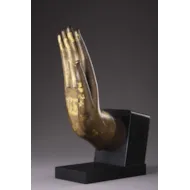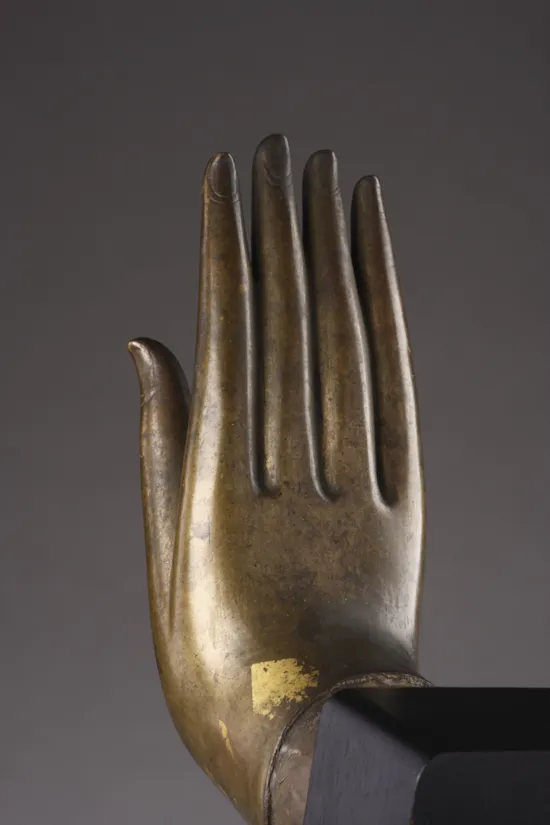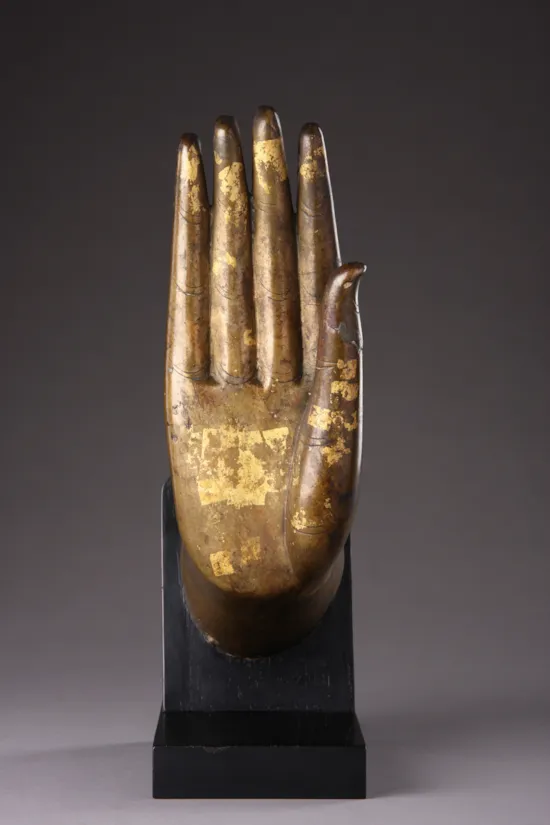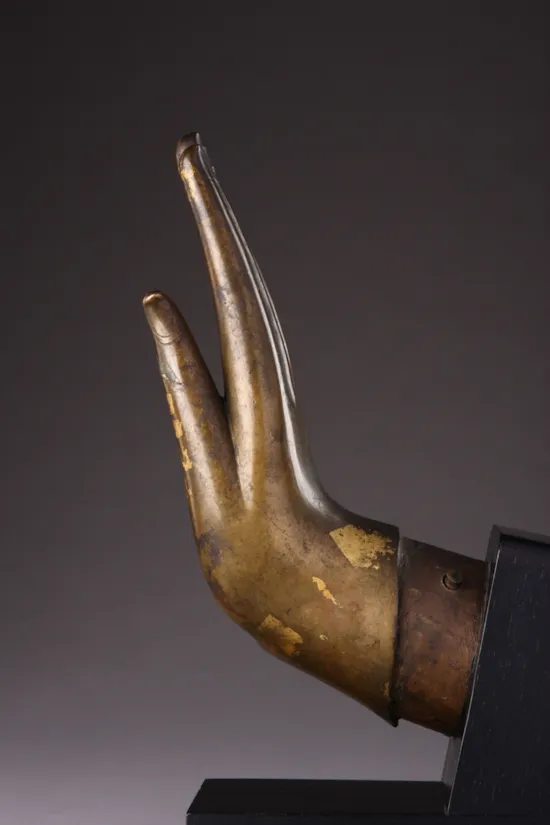Chinese Cast Bronze Hand of the Buddha Shakyamuni
A Fine Chinese Cast Bronze Hand of the Buddha Shakyamuni
With long delicate fingers the nails and joints shown with carefully etched lines
Partly gilded smooth patina
China
Ming Dynasty (1368 – 1644) – 16th Century
Size: 26cm high, 10cm wide 16cm deep – 10¼ ins high, 4 ins wide, 6¼ ins deep
With long delicate fingers the nails and joints shown with carefully etched lines
Partly gilded smooth patina
China
Ming Dynasty (1368 – 1644) – 16th Century
Size: 26cm high, 10cm wide 16cm deep – 10¼ ins high, 4 ins wide, 6¼ ins deep
A Fine Chinese Cast Bronze Hand of the Buddha Shakyamuni
With long delicate fingers the nails and joints shown with carefully etched lines
Partly gilded smooth patina
China
Ming Dynasty (1368 – 1644) – 16th Century
Size: 26cm high, 10cm wide 16cm deep – 10¼ ins high, 4 ins wide, 6¼ ins deep
With long delicate fingers the nails and joints shown with carefully etched lines
Partly gilded smooth patina
China
Ming Dynasty (1368 – 1644) – 16th Century
Size: 26cm high, 10cm wide 16cm deep – 10¼ ins high, 4 ins wide, 6¼ ins deep
This hand most probably from a large temple figure of the Buddha, was raised in a gesture of reassurance against the chest of the statue and shows the Buddha as a protector and preserver of mankind from suffering.
The gestures of the Buddha became stereotyped over time, and it was common practice to show standing figures with the right hand raised, the palm turned outwards, in an offer of reassurance to the faithful. The hands shown in the lap of a seated Buddha image indicated meditation, the right hand touching the ground with the palm turned inwards referred to the challenge of Mara, God of Desire and Death, and when the Buddha victorious over the god called the earth to witness. The right hand held down towards the ground palm turned outwards indicated generosity and lastly when the hands were brought together in front of the chest, the left below the right, the gesture was that of preaching.
The gestures of the Buddha became stereotyped over time, and it was common practice to show standing figures with the right hand raised, the palm turned outwards, in an offer of reassurance to the faithful. The hands shown in the lap of a seated Buddha image indicated meditation, the right hand touching the ground with the palm turned inwards referred to the challenge of Mara, God of Desire and Death, and when the Buddha victorious over the god called the earth to witness. The right hand held down towards the ground palm turned outwards indicated generosity and lastly when the hands were brought together in front of the chest, the left below the right, the gesture was that of preaching.
Ex Finch and Co
Ex Swiss Private collection
Ex Priavte collection
Ex Swiss Private collection
Ex Priavte collection
Chinese Cast Bronze Hand of the Buddha Shakyamuni










